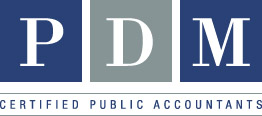Many companies choose to lease certain assets, rather than buy them outright. Leasing arrangements are especially common among companies that rely on expensive equipment or real estate in their day-to-day operations, including construction contractors, manufacturers, retailers, health care providers, airlines and trucking companies.
Roughly 85% of these leases aren’t reported on company balance sheets, according to estimates made by the Financial Accounting Standards Board (FASB). But that’s going to change under a new accounting standard — Accounting Standards Update that was issued on February 25, 2016.
Advantages of Leasing
Leasing can allow companies to be more flexible, lower risk and adapt to changing market conditions. Leasing may be a good option for companies that:
- May not have enough cash for down payments
- Do not have access to financing
- Want to avoid the risk that equipment will become technologically obsolete
- Fear that property values might nosedive.
From a financial reporting perspective, leasing offers an added bonus: Under the existing rules, a lease obligation is reported on the balance sheet of the company that leases the asset (the lessee) only if the arrangement is similar to a financing arrangement — then it’s considered a capital (or finance) lease. Otherwise, it’s an operating lease, which is expensed as lease payments are incurred and the terms are disclosed in the footnotes – NOT the balance sheets.
The FASB Finalizes Long-Awaited Leasing Standard
The finalized standard on lease accounting under U.S. Generally Accepted Accounting Principles still allows for a distinction between how capital and operating leases are reported on the income statement and statement of cash flows. Capital leases will continue to be treated as financing transactions, meaning interest and amortization will be calculated with rent expense.
The big difference under the updated guidance is that all leases with terms of more than 12 months will be reported on the balance sheet. In other words, lessees will report a liability to make lease payments, initially based on the net present value of those payments, and a right-to-use asset for the term of the lease. Companies can also elect to capitalize leases with terms of 12 months or less under the new standard.
Updated International Rules Issued in January
In general, all lease expenses will be treated as financing transactions and capitalized under the international standard. For companies that follow the international accounting standards, the effects will spill over to their income statements and statements of cash flows, not just their balance sheets.
Want to Know More About Transitioning Your Books?
The new standard goes into effect for fiscal years beginning after December 14, 2018 (in other words, in 2019 for calendar-year public companies). Private companies have an additional year to implement the changes.
We highly recommend you speak with a tax professional about how this rule change affects you. PDM’s tax experts can help advise you on the best course of action. Contact us; with our years of technical experience, advanced training, and cutting edge technology, we are your financial partner.


